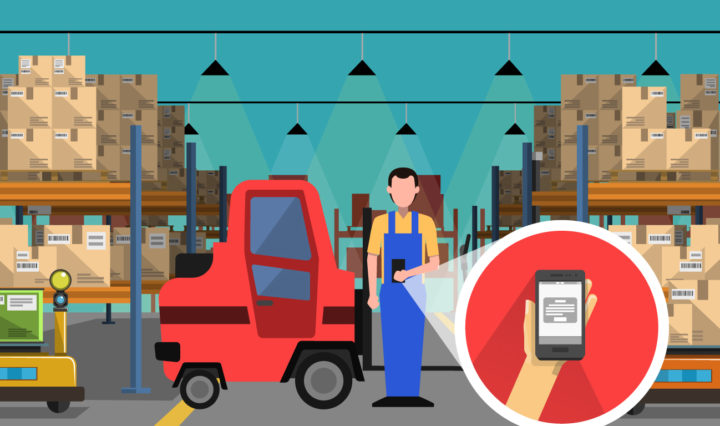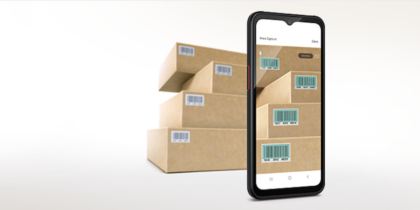With trillions upon trillions of data points accessible through billions of sensors and internet connected devices, the digital age is ripe with possibilities. However, for supply chain practitioners and logistics professionals, finding the perfect technology solution is more complicated than ever before due to the growing push for just-in-time or just-in-sequence inventory management, a rise in the “uberization” of freight transportation and demands from customers for low-cost same-day shipping options.
Internet-connected devices and IoT (Internet of Things) are forcing drastic changes to these industries and universal adoption looks inevitable. Fortunately, this revolution has also made it easier for executives to embrace location-based services via device and sensor-based location technologies.
Location-based services can help supply chain practitioners and logistics professionals enhance visibility for assets and workers by providing tighter control over processes. The devices and sensors report critical contextual location data that enable better tracking of assets, more efficient management of shipments and workers, and real-time intelligence for anticipating potential disruptions in the production and distribution life cycle.
Location-based Services
Tracking assets and workers has always been a focus for the logistics and supply chain industries, but a major adoption barrier has been the cost of purchasing and maintaining expensive equipment. But in recent years, the proliferation of mobile devices, coupled with advancements in location technologies, Bluetooth and Wi-Fi, battery design and more have lowered expenses for location-based services. Using small sensors or tracking devices, businesses can pinpoint the location of assets around the world and monitor workers through mobile phones.
One of the most common location technologies is GPS, as it’s available on most mobile phones and a large number of tracking devices. It’s best to institute a multilayered approach to location technology because GPS signals can be unavailable when in warehouses, or they can be blocked when an object is overhead. It’s also possible for GPS to shorten a device’s battery life, or to not be present at all in a device. For these reasons, mobile carrier network location, global cell tower and Wi-Fi are several other commonly used location technologies for logistics and production and distribution use cases.
Today, the process for adopting location-based services is fairly simple. A business can locate a device by using the device identifier (phone number) without an application, attaching a small tracking device to a package or asking an employee to download a workforce management application on their mobile phone. After implementing location-based services, organizations receive instant access to a new layer of actionable business intelligence.
Gain Better Insight Into Your Supply Chain
Find out how retailers are using technology to improve supply chain management. Download Now
Location Data Fuels Efficiency and Productivity
Location-based services enable professionals to receive real-time location data for assets and workers throughout the production life cycle. This instant access to location data enhances confidence, helps mitigate risk and optimizes efficiencies.
Real-time location insights allow for active monitoring, which can be vital in a variety of scenarios. For example, it can be invaluable when scaling up business to accommodate larger shipments or when encountering an emergency or potential disruption to the supply chain. Understanding the contextual location of assets and workers allows these industry decision makers to quickly reroute shipments, change staffing assignments, and receive and transmit real-time notifications on ETAs. The location data gathered along the way can also be used to evaluate performance, shorten delivery cycles, improve record keeping and calculate short- and long-term costs.
In a retail scenario, a business preparing for the holiday shopping season can be devastated if its supply chain is compromised by a major winter storm. If a storm threatens to delay or halt a fleet of shipments, the logistics intermediary can utilize contextual location data to rapidly initiate a series of fallback processes. The intermediary can proactively alert and reroute drivers to nearby warehouses while reporting real-time ETAs down the production chain. Staffing will be adjusted and warehouse managers and customers will receive updates on the status of the shipments. In this situation, location data enables the logistics intermediary to identify a risk and institute a process that minimizes disruption to the supply chain, potentially saving the retailer from losing money.
Accelerated adoption of IoT and connected device technologies in the logistics and supply chain industries continue to drive ever greater efficiencies and benefits for all concerned. Location-based services have a low barrier to entry, and offer enhanced visibility and better reporting capabilities. Access to real-time contextual location data also provides a more comprehensive understanding of each link in the supply chain to enhance analytics and predictive modeling. These services can help logistics professionals and supply chain practitioners limit risk potential and navigate more effectively while embracing new technologies.
Sensor technology can also help provide new insights into fleet maintenance.








